Excellent Cooling and Plenty of M.2
Review Summary
The ASRock Z790 NOVA WiFi motherboard impresses with its feature-rich design, including a robust 20+1+1 power stage VRM, extensive M.2 connectivity, and Gen5-based ports. It excels in stock performance and overclocking, offering excellent value for its price point.
Overall, this motherboard is a fantastic choice for enthusiasts seeking a high-spec motherboard with plenty of features and firm performance.

Overall
-
Design - 9/10
9/10
-
Features - 9/10
9/10
-
Performance - 9.5/10
9.5/10
-
Value - 9/10
9/10
Pros
- 20+1+1 Power Stage
- Excellent VRM Cooling
- Blazing Gen5 M.2 Port
- Tool-less handling of Blazing M.2 Port
- PCIe Gen5 Steel Reinforced Slot
- 6x M.2 Slots
- Intel Killer 2.5GbE LAN Port
- WiFi 7 Module and Antennae
- 8x Fan Headers
- Audio ALC4082 Codec
- 2x USB 3.2 Gen2x2 Type-C Port
- Clear CMOS Button
- Debug LED
- Price
- Warranty
Cons
- None
In our last take, we took a look at the MSI MAG Z790 Tomahawk Max WiFi motherboard. This time, I am spinning the ASRock Z790 NOVA WiFi motherboard. ASRock has released new motherboards with the release of Intel’s 14th-generation platform. NOVA is a high-end motherboard in a new release under the Phantom Gaming branding. This is quite a beefed-up motherboard that has a plethora of features, powerful VRM/MOSFET on top of Gen5-based connectivity. The salient features include:
- This motherboard supports Intel 12th, 13th, and 14th gen CPUs.
- Beefy 20+1+1 Power Phases using Dr.MOS SPS for VCore and GT
- It has a low-loss, server-grade, 8-layer PCB Design
- Memory support of up to 8000+(OC) MHz
- 1x Gen5 PCIe x16 Slot
- A total of 6x M.2 Ports including Blazing Gen5 M.2 port
- Audio Solution using ALC4082 with Nahimic Audio Augmentation
- 2x USB 3.2 Gen2x2 Type-C Ports
- Intel Killer 2.5GbE LAN
- 11be WiFi 7 and Bluetooth
- GPU Support Bracket
- Tool-less Blazing M.2 Cover
We have also tested the ASRock Z790 Steel Legend WiFi, which is an excellent option for the best white PC build.
Key Takeaways
- The ASRock Z790 NOVA WiFi is a top-notch motherboard with 6x M.2 ports, RGB lighting, and plenty of overclocking headroom with its 20+1+1 VRM structure.
- The ASRock Z790 NOVA WiFi is perfect for those after a performance-packed, high-end motherboard with Gen5-based M.2 connectivity.
- The ASRock Z790 NOVA WiFi is not for those who already have a Z790 motherboard.
Let’s begin with the specifications:

I have shown the basic specifications in the picture above. These are taken from the ASRock product web page. We will cover these in the Design Overview section.
Packaging And Unboxing

The motherboard is shipped inside a standard cardboard packing box. ASRock has maintained its standard packaging where the motherboard is placed inside an anti-static container and tucked to its container using zip-ties. The following are provided:
- 1x ATX-sized Motherboard
- 2x SATA 6Gbps Data Cables
- 1x User Manual
- 1x Graphics Card Holder
- 1x ASRock WiFi Antenna
- 1x ARGB Splitter Cable
- 3x Thermistor Cables
- 5x Screws for M.2 Sockets
- 5x Standoffs for M.2 Sockets
- 1x Phantom Gaming Sticker
- 1x Phantom Gaming Key Cap

Design Overview
Time to go over the design:

ASRock Z790 NOVA WiFi motherboard has an Intel LGA1700 socket that powers the 4x DIMM slots, 1x HDMI 2.1 port rated at 4K@60Hz, and 1x DP 1.4 port rated at 8K@60Hz. The HDMI port supports TMDS and HDCP 2.3, whereas the DP port supports DSC and HDCP 2.3. In addition, this socket provides 20x PCIe lanes. The first PCIe x16 slot is wired to this socket. It is a Gen5 slot. 2x M.2 ports (M2_1 and M2_2) are wired to the CPU socket. the M2_1 is Gen5x4 slot. The PCIe x16 and M2_1 are using a redriver or MUX that would make the PCIe gen5 slot operate at the x8 link in case M2_1 is populated.
The DMI link operates at PCIe Gen4x8 between the socket and chipset. The rest of the connectivity comes from the Z790 chipset, including 4x Gen4x4 M.2 slots, WiFi 7 solution, Intel Killer NUC, SATA, and Audio solution. ASRock has used multiple controllers for USB and eSPI for hardware monitoring, including the Serial IO controller. The server-grade low-loss PCB improves signal integrity across the board. Let’s start with the power delivery circuit of this motherboard.
Power Delivery To Socket
This motherboard uses an Intel LGA1700 socket which makes it compatible with the last two generations of Intel CPUs (Alder Lake and Raptor Lake). ASRock uses a beefy heatsink cover over the VRM/MOSFETs. There are aluminum-made covers that are finished in quite some style. They are connected using a 6mm heat pipe. On top of this, there is a VRM Fan as well that has a maximum speed of 8000+ RPM. This would keep the VRM/MOSFETs cool under heavy load, improving the efficiency. The Capacitors are 20K rated for durability.

ASRock has used the Renesas RAA 229131 PWM controller to govern the 20+1+1 power stages on this motherboard. The 20 stages are ISL99390 from Dr. MOS SPS. Each stage is 90A rated and compatible with the Renesas PWM regulator. These 20 stages power the Vcore and 1 stage for the GT. Dr. MOS SPS also monitors the current and temperature of each stage for best management.

There is a stylish design based on Phantom Gaming branding over the main heatsink cover. It is ARGB backlit to give some vivid lighting effects and cool looks.
DIMM Slots

There are 4x DDR5 UDIMM slots on this motherboard that have welding done on multiple layers for stable signal traces and power shapes delivering lower temperature and high energy efficiency for memory overclocking. The maximum supported RAM capacity is 192GB. This motherboard supports binary as well as non-binary DDR5 kits. This motherboard supports Intel XMP 3.0. The supported memory is non-ECC and unbuffered. The user can leverage the performance of DDR5 kits using ASRock memory tweak options in the BIOS. These slots are steel-reinforced and have clips on both ends.
Storage Options
This motherboard has 6x M.2 slots, and 4x SATA ports. I appreciate how ASRock has favored the M.2 ports over the SATA ports and still provides enough SATA ports for any requirement. Honestly, 6x M.2 ports is something that not every motherboard offers, particularly in this price range. The top M.2 port is labeled Blazing, and it conforms to PCIe Gen5. It has tool-less handling, making it convenient for the user to install or remove the SSD.

The other 5x ports are wired to the chipset, and they also have an aluminum cover for heat transfer. Each slot has two thermal pads. One is on the base plate, and the other is on the cover. One slot is in an upward layout (not vertical) unlike the remaining 5x slots that are horizontal. The M2_5 supports PCIe Gen4x4 and SATA interface. These slots support a form factor of 2280. The Gen4x4 slots are capable of delivering 64GB/s, whereas the Gen5 port is capable of delivering 128GB/s. The enhanced M.2 heatsink with an anti-drop screw design makes the installation process more easily.

Speaking of SATA ports, this motherboard has a total of 4x ports wired to the socket.
PCIe Connectivity

This motherboard has a total of 3x PCIe slots. The two slots are steel-reinforced and use SMT-type slotting for improved signal flow. This style provides extra anchor points on the PCB with stronger latching. And there is a graphics card holder as well to support the heavy-weight graphics card. ASRock has been paying attention to the details.
The top slot is fully x16 wired, but it will operate at x8 link if M2_1 port is populated. This is Intel’s platform restriction. The second and third slots are wired to the socket. The middle slot is PCIe Gen4x4, whereas the last slot is PCIe Gen3x1 rated.
USB Connectivity
The ASRock Z790 NOVA WiFi has plenty of USB connectivity. This includes:
- 2 x USB 3.2 Gen2x2 Type-C (1 Rear, 1 Front)
- 4 x USB 3.2 Gen2 Type-A (Rear)
- 7 x USB 3.2 Gen1 Type-A (3 Rear, 4 Front)
- 6 x USB 2.0 (2 Rear, 4 Front)
All USB ports support ESD Protection, which is a wise design. It is good to see two USB 3.2 Gen2x2 ports on this motherboard. ASRock has used multiple hubs and controllers for these 10 connections. These include ASM3042, ASM1074, GENESYS Hub, and PI3EQX10 redriver.
Networking Solution
ASRock has used Intel Killer E3100G 2.5GbE LAN port. This is for wired connectivity. On top of this, there are wireless connectivity options as well in the form of WiFi 7 and Bluetooth connectivity. The WiFi module is installed on M.2 conforming to PCIe Gen3x1 interface CNVi and is wired to the chipset. In fact, the Killer LAN port is also wired to the chipset. ASRock has provided an antennae for the WiFi connection.
ASRock has provided software to leverage the powerful networking options. The enhanced detection and prioritization engine provides the ultimate networking experience for gaming and multimedia applications by utilizing the Killer GameFast technology. This engine is designed to reduce latency and lag during gameplay and the users can enjoy less buffering since it is capable of automatically detecting, classifying, and prioritizing the network traffic. The user can use the Intel KillerTM Intelligence Center for customization of network traffic.
The WiFi (802.11 be) has high speed, wider channels with improved efficiency, providing 5.8Gbps, which is 2.4 times faster than the WiFi 6/6E standards. The new protocol has 320MHz channel width compared to 160MHz on the previous generation. Wi-Fi 7 improves the modulation scheme from 1024-QAM to 4096-QAM which is impressive. This new generation is capable of sending and receiving data across several frequencies and channels at a time. This high-speed, low-latency multi-link capability provides a smooth and real-time interactive experience for VR/AR gaming.
Audio Solution

ASRock has given an uplift to the Audio Hardware by using RealTek ALC4082 codec with CHEMICON capacitors. The left and right audio channels are on different PCB layers to eliminate EMI interference. The audio circuit is wired to the chipset for effective control. This is a 7.1 Channel audio solution that has S/PDIF output as well. It supports up to 32-bit/384 kHz playback on the front panel. ASRock is using Nahimic Audio solution to further augment the audio experience coming from their motherboard providing a crystal clear, vibrant, and engaging listening experience.
Z790 Chipset
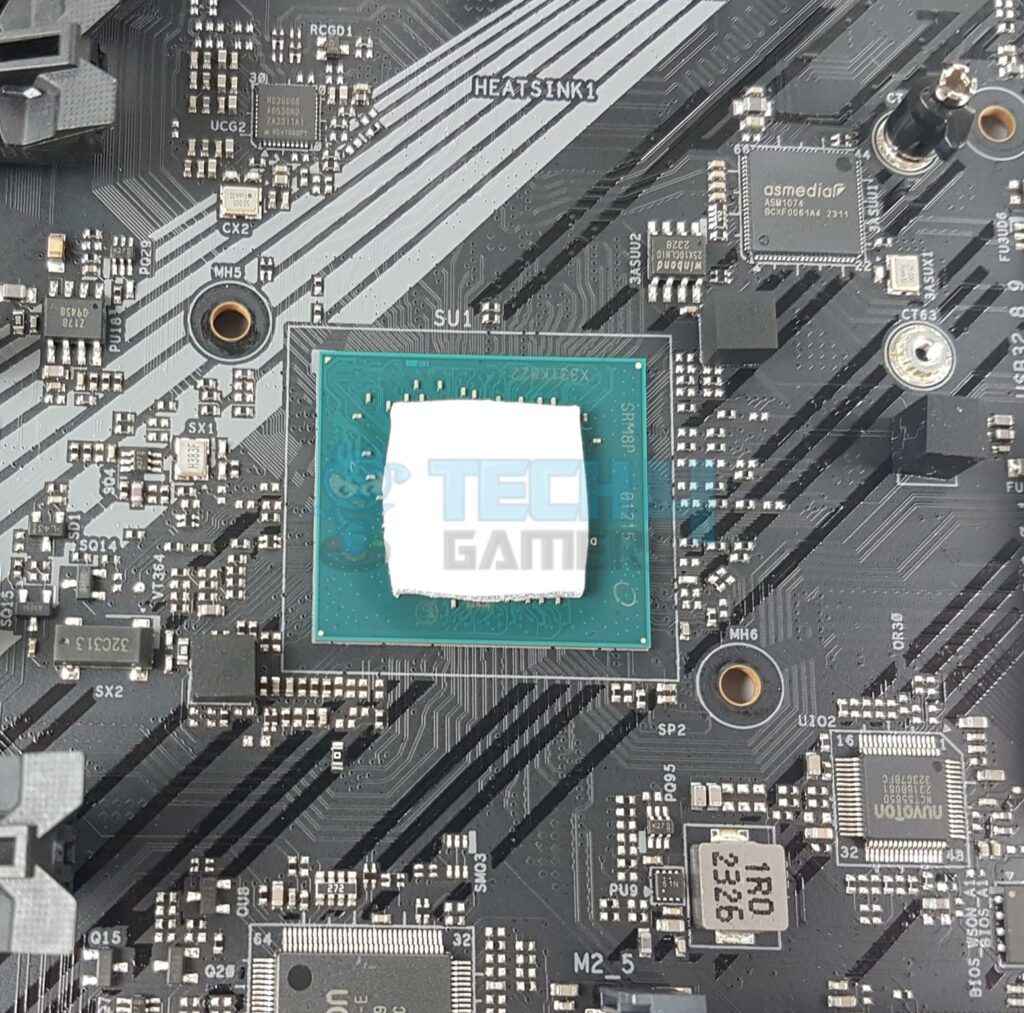
I am showing the Z790 chipset after removing its heatsink cover. Now that we have given a brief overview of this motherboard, let’s take a look at the connectors.
Internal Connectors
There are:
- 3 x Thermistor Cable Headers
- 1 x SPI TPM Header
- 1 x Power LED and Speaker Header
- 1 x RGB LED Header
- 3 x Addressable LED Headers
- 1 x CPU Fan Connector
- 1 x CPU/Water Pump Fan Connector
- 5 x Chassis/Water Pump Fan Connectors
- 1 x VRM Fan Connector
- 1 x 24-pin ATX Power Connector
- 2 x 8 pin 12V Power Connectors
- 1 x Front Panel Audio Connector (15μ Gold Audio Connector)
- 1 x Thunderbolt™ AIC Connector (5-pin)
- 2 x USB 2.0 Headers (Support 4 USB 2.0 ports)
- 2 x USB 3.2 Gen1 Headers (Support 4 USB 3.2 Gen1 ports)
- 1 x Front Panel Type C USB 3.2 Gen2x2 Header (20 Gb/s)
- 1 x Dr.Debug with LED
- 1 x Power Button with LED
- 1 x Reset Button with LED
The 4-pin RGB connector supports 12V/3A, providing 36W for LED strips. The ARGB header is rated for 5V/3A, providing 15W for LED strip. The CPU_FAN1 is rated at 1A (12W). The other fan headers are rated at 2A (24W). The EPS and 24-pin ATX connectors use a hi-density design to provide smooth and effective electricity flow. The VRM_FAN supports VRM fans for up to 2A (24W).
Each fan header is powered and controlled by nuvoTon 3948S. There are no LEDs for troubleshooting. Instead, there is a proper debug LED with codes defined in the user manual. This LED can also display CPU temperature.
W25Q256JVEQ is a 256Mbit Flash ROM.
Rear IO Panel

There are:
- 2 x Antenna Ports
- 1 x HDMI Port
- 1 x DisplayPort 1.4
- 1 x Optical SPDIF Out Port
- 1 x USB 3.2 Gen2x2 Type-C Port (20 Gb/s)
- 4 x USB 3.2 Gen2 Type-A Ports (10 Gb/s) *
- 3 x USB 3.2 Gen1 Ports *
- 2 x USB 2.0 Ports
- 1 x RJ-45 LAN Port
- 1 x Clear CMOS Button
- 1 x Line Out Jack (Gold Audio Jack)
- 1 x Microphone Input Jack (Gold Audio Jack)
*USB32_12 supports Ultra USB Power. These ports provide 5V power transformed from +12V power rail, whose voltage drop will be much lower than the +5V from the PSU under heavy loading, and prevents noise from other devices or RGB LED. These ports are controlled by RTS5452E. There are two yellow color Lightning USB Ports. These ports use a dedicated controller so as to reduce the input lag and improve the gaming experience using the connected peripherals.
ASRock has mentioned that they have provided more tolerance space around the Rear IO making it adjustable in any PC Case (upward, downward, left, or right). There is a Clear CMOS button as well which is a nice and convenient design.
I am showing the PCB after removing the heatsink covers. There is a backplate over the backside that makes a connection with the PCB using thermal pads. To my surprise, this is a plastic-made backplate with no metal on it. I am not sure how it will dissipate heat. It has NOVA branding over it.

The above picture shows the backplate.
BIOS
The BIOS interface is almost similar to what I saw on the Z790 Steel Legend and Z790 PG Riptide motherboards that we tested earlier. The interface is convenient, though the MSI interface has a better flow, in my opinion. This time, ASRock has included CPU Score that indicates the quality of the silicone in terms of numbers.
The higher mark indicates a high-quality SKU that is expected to overclock better and takes less voltage for that. My CPU scored 83 which is just fine. Another key change is the provision of Gaming OC presets, whereby you would get two pre-defined profiles for easy overclocking of your CPU. However, it is not guaranteed that every CPU would work with these due to silicone differences and quality.
All CPU-related settings can be found on the OC Tweaker menu. The same goes for the RAM and Voltage settings. The overclocking or user profiles can be created under the same menu. Intel Dynamic Tuning Setting can be found under the CPU Configuration sub-menu along with the Power limit settings.
The Advanced menu has other platform-related settings like storage, PCIe bridging, Power settings, NVMe, Intel Thunderbolt, TPM, and USB settings. You can control the ARGB lighting using the Polychrome tool. Similarly, Secure Erase can be done from this menu. HW Monitor menu provides fan tuning provisions like Fan-Tastic Tuning, determines each fan’s characteristics and optimizes it for further use.
Software
If you have enabled the System Drivers Installer in the BIOS, you will be prompted to use the Auto Driver installer on the Windows startup which is an automated utility. It will look for available drivers and updates on the ASRock website and download/install them as per the user selection.
Phantom Gaming Tuning is a primary software that allows the users to do almost anything that can be done in the BIOS. You can switch to different modes. OC Tweaker is there to overclock the CPU or undervolt it. System Info provides sensor data. Fan-tastic tunes the fans of the system.

It is a convenient way to restart the PC in UEFI BIOS.
ARGB Lighting
PolyChrome RGB LED is another handy utility that allows the user to customize the ARGB elements of the motherboard as well as of the connected devices.
The above are a few pictures of the test build showcasing the ARGB lighting effects.
Test Build

I have used the following configuration to test the motherboard:
- ASRock Z790 NOVA WiFi
- MSI GeForce RTX 3090 Gaming X Trio 24G
- Intel Core i7-14700KF [Stock, Auto]
- EKWB EK-Nucleus AIO CR360 LUX ARGB Cooler
- XPG Lancer RGB 32GB 7200MHz CAS34 DDR5 kit
- Sabrent Rocket 4 Plus 1TB Gen4x4 NVMe SSD [For OS]
- Sabrent Rocket 4 Plus 4TB Gen4x4 NVMe SSD [For Games]
- Sabrent Rocket NANO V2 4TB Portable Drive
- Be quiet! Straight Power 11 1000W Platinum PSU
- Thermaltake Core P6 TG Snow Edition in an open frame layout

The above is a picture showing a run of CPU-Z. We can see that the CPU multiplier is reporting the clocks between 8.0 and 55 ratio. As I reported in the MSI MAG Z790, the graphics card operates at the x8 link; the same goes for this motherboard. This is Intel’s limitation and comes when the Gen5 M.2 slot is populated.

CPU-Z reported the RAM operated at 6800MHz, which is an XMP Profile2 because our motherboard sample did not POST with a RAM frequency above 7000MHz, but it was later fixed after running with ASRoock, and now the motherboard can run RAM at 8000MHz with a different kit.

Also running Corsair Dominator Titanium DDR5-7200 C34 kit easily at 7400MHz.

The above is a readout from TechPowerUP’s GPU-Z showing the data from the graphics card confirming that the card is working. It also shows that the graphics card is operating at Gen4 x8 link.
Test Result
The testing was done on stock settings with XMP loaded. This motherboard has powers unlocked by default.
CPU And Memory Tests
It is time to take a look at the test results starting with CPU and memory benchmarks.
The CPU score was 35684 in an R23.2 Multi Core load and 2194 in a single-threaded load. The RAM was tested at 7200MHz, where it shows a good performance. The Geekbench score is similar to the R23.2. 147355MIPS is the score of the compression benchmark in 7-Zip and 130234MIPS are decompressing score. The CPU scored 479.27 in Blender Benchmark 4.0. Overall, this motherboard performs satisfactorily.
Storage Test
I have used a PCIe Gen4x4 NVMe drive and a USB 3.2 Gen2x2 Type-C drive. The Sabrent Rocket NANO V2 4TB portable drive is rated for 1500MB/s. Both drives passed their sequential read and write speeds in CrystalDiskMark.
The NVMe drive has performed better in PCMARK10 Data Drive benchmark obtaining a 5753 score whereas the USB drive obtained a 565 score. These scores are marginally better than the MSI Z790 Tomahawk Max WiFi scores.
Gaming Tests
Our build got a 10828 score in Time Spy Extreme and a 13378 score in Fire Strike Ultra. The Speed Way score was 5466. In all six games that I have tested, the FPS was above the 100 mark. I have tested all games using their highest graphics presets on 1440P using 165Hz refresh rate over Display Port. The gaming performance is right on the money and this motherboard can handle the task easily.
System Performance Test
I have used PCMARK10 and Performance Test to evaluate the overall system performance. The system did 10222 in PCMARK10 Basic test which is a remarkable result. The result from Performance Test is 13338. The overall system performance is excellent as well.
Core Clock Behavior
The system was left idle for 10 minutes under the Balanced Power Profile. The idle clocks were 1100MHz on the P-Cores whereas these were 800MHz on E-Cores, more or less. The clocks were peaking at 5.6GHz under a 1T load. All cores load put these clocks to 5500MHz. These figures confirm Intel’s clock ratings for Core i7 14700KF.
Thermals and Power
In idle state, the CPU was doing 3.043W on the package, whereas the graphics card was at 10W on the GPU core. Under a single core load, the CPU was doing 49.254W on the package. However, this turned quite the opposite when an all-core stress test was put to its paces, and the CPU ended up consuming 278.699W. The Graphics card under full stress test load was doing 376W. During gaming, the average GPU power draw was 356W, and the CPU’s power draw was 99W. The system power draw, on average, was approximately 500W.
Testing was done at an ambient temperature of 22ᵒC. The CPU was idling at 27ᵒC, and the graphics card was idling at 43ᵒC. Under load, the CPU was doing 90ᵒC whereas the GPU was doing 78ᵒC using the AIDA64 Stability test with AVX load.
The VRM/MOSFET was doing 62.2ᵒC at the same ambient. This is a good performance, though these temps could have been under 60ᵒC given that there is an embedded fan in the VRM heatsink and both covers are connected via a heat pipe. However, there was no active airflow towards the motherboard.
Should You Buy It?
Let’s go over who the ASRock Z790 NOVA WiFi is for:
Buy It If
If you are looking for a High-Spec Motherboard: The ASRock Z790 NOVA WiFi is a feature-rich motherboard in every aspect. It sits comfortably in the upper mid-range market segment. If you want a no-compromise motherboard then this motherboard should be on your consideration list.
If you want more M.2 Connectivity: This motherboard has a total of 6x M.2 ports, which is quite some number, and it comes with no compromise since one port provides Gen5x4 connection and the other 5x ports provide Gen4x4 connections.
If you are an overclocker: This motherboard has a beefy VRM/MOSFET design with active cooling. With a 20+1+1 design, you can surely push your CPU to its bounds, provided it is a good silicone.
Don’t Buy It If
If you already have a Z690/Z790 motherboard: If you are already a user of Z690 and Z790 motherboard, then you can skip this motherboard. However, if your motherboard does not have Gen5-based M.2 ports, then this motherboard can meet your needs.
Final Words
The ASRock Z790 NOVA WiFi is not just a well-balanced motherboard. It is, in fact, a feature-rich motherboard at this price of USD 279.99, making this board too good a value to have. This motherboard uses 20+1+1 power stages with a powerful Renesas PWM controller and Dr.MOS SPS stages for VCore and GT. The VRM/MOSFET cooling is a composite of aluminum heatsinks joined by a heat pipe and has an embedded fan for active cooling.
This motherboard has a whopping 6x M.2 ports with Blazing M.2 port operating at 128GB/s bandwidth, whereas the other Gen 4 drive operates at 64GB/s bandwidth. There are steel-reinforced PCIe slots, with the top slot having a Gen5 x16 rating. CPU supports HDMI 2.1 and DP 1.4 ports and 4 DIMMs, providing a total of 192GB capacity with support of 8000+(OC)MHz RAM frequencies. This board has 4x SATA ports.
In terms of USB connectivity, this board is again providing a good value with two USB 3.2 Gen2x2 ports, 2x Lightning Ports, and 2x Ultra USB Power ports. There are a total of 19 USB connections using multiple controllers. This motherboard comes with 8x Fan headers as well.
ASRock has provided a CPU Score in the BIOS that indicates how good a given CPU is from the perspective of overclocking and voltage. Also, there is a Gaming OC Preset with Stage 1 and Stage 2. The Stage 2 puts an aggressive overclock of 5.7GHz on all cores and 5.9GHz on two cores. Our CPU handled this preset pretty well, and the R23.2 multi-score was 37279 with a single core score of 2305. The maximum temperature was 91ᵒC, and VRM/MOSFET was at 64ᵒC. This is a good performance.
I am impressed with the overall performance of this motherboard, be it a stock performance or overclocking. ASRock is providing a 3-year warranty on this motherboard, and its current retail price of USD 279.99 makes it the best value.
Thank you! Please share your positive feedback. 🔋
How could we improve this post? Please Help us. 😔
Feedback By:
[Hardware Reviewer & Editor]
Meet Nauman Siddique, a highly experienced computer science graduate with more than 15 years of knowledge in technology. Nauman is an expert in the field known for his deep understanding of computer hardware.
As a tech tester, insightful reviewer, and skilled hardware editor, Nauman carefully breaks down important parts like motherboards, graphics cards, processors, PC cases, CPU coolers, and more.
- 15+ years of PC Building Experience
- 10+ years of first-hand knowledge of technology
- 7+ years of doing in-depth testing of PC Hardware
- A motivated individual with a keen interest in tech testing from multiple angles.
- I majored in Computer Science with a Masters in Marketing
- Previously worked at eXputer, EnosTech, and Appuals.
- Completed Course in Computer Systems Specialization From Illinois Tech


 Threads
Threads




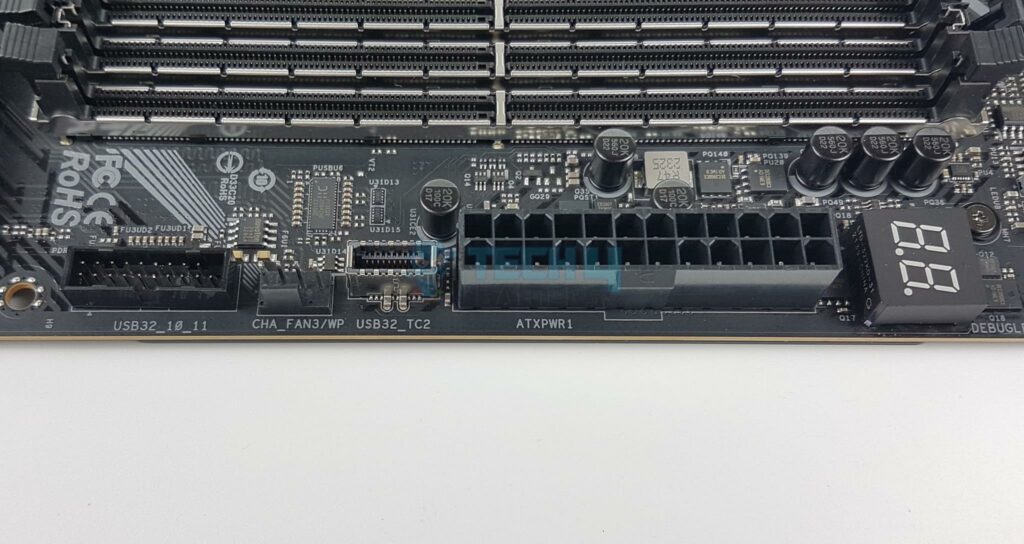








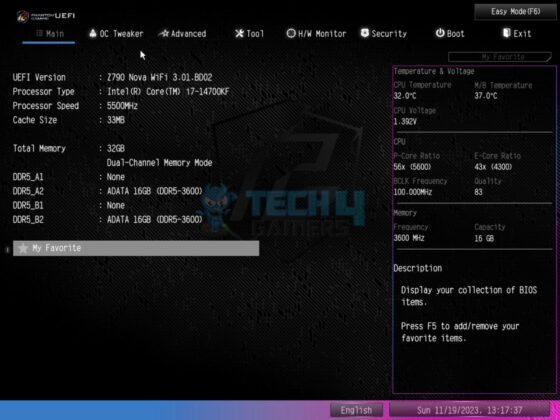






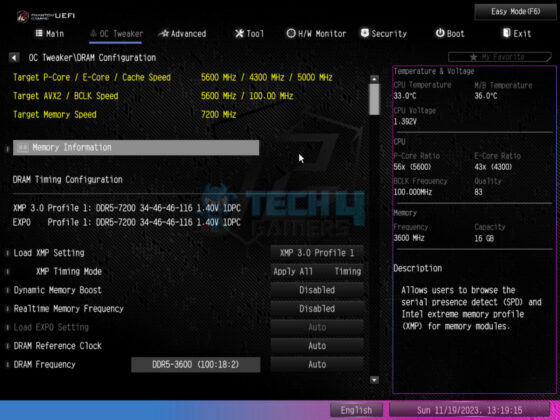
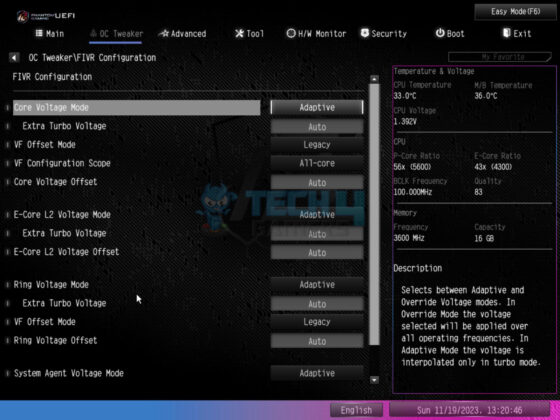







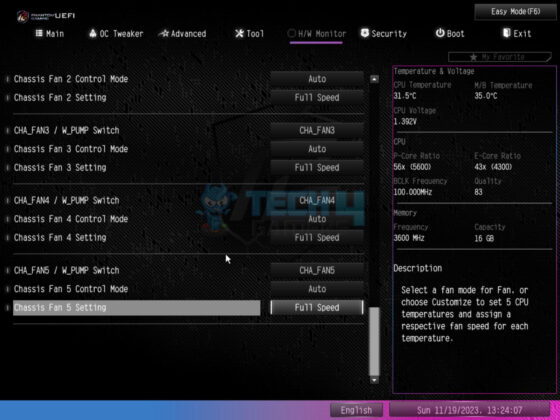













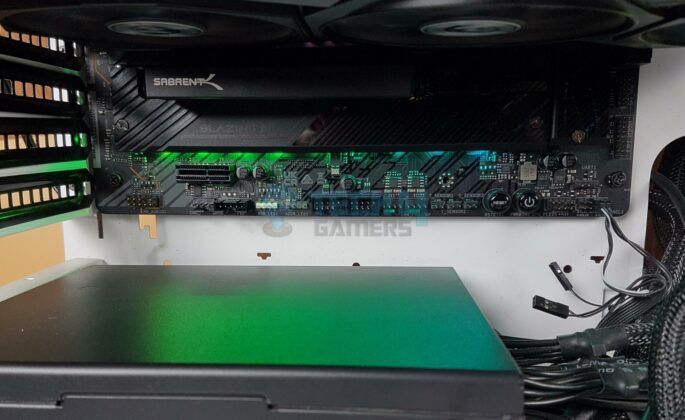







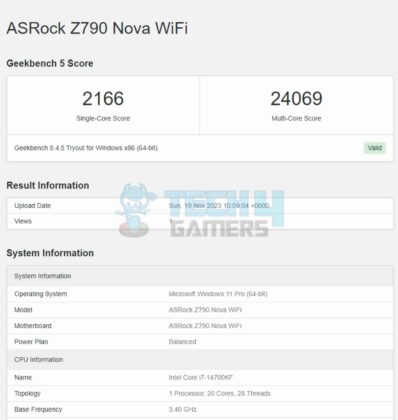




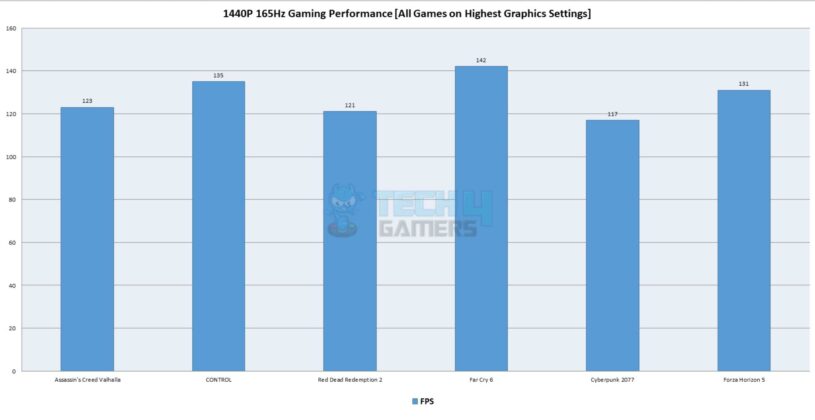










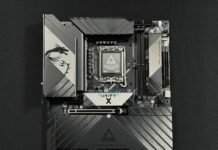

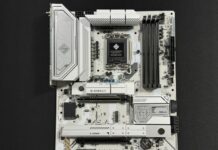
![The Best Motherboards For Ryzen 5 9600X In 2025 [With Benchmarks] Best Motherboards For Ryzen 5 9600X](https://tech4gamers.com/wp-content/uploads/2024/07/Best-Motherboards-For-Ryzen-5-9600X-218x150.jpg)
